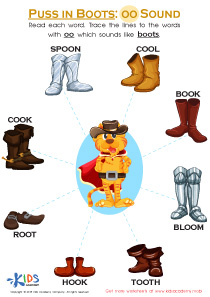Normal Middle Vowel Worksheets for Ages 3-8
4 filtered results
-
From - To
Discover our engaging "Normal Middle Vowel Worksheets for Ages 3-8", designed to boost early literacy skills. Perfect for young learners, these printable worksheets focus on mastering middle vowel sounds, essential for reading development. Each activity combines fun illustrations with educational content, ensuring children stay motivated and entertained. Tailored to support various learning styles, these worksheets are an excellent resource for parents and teachers alike. Visit the link to access a wide range of exercises that will help build your child's confidence in vowel recognition and sound blending. Make learning vowels a delightful adventure today!
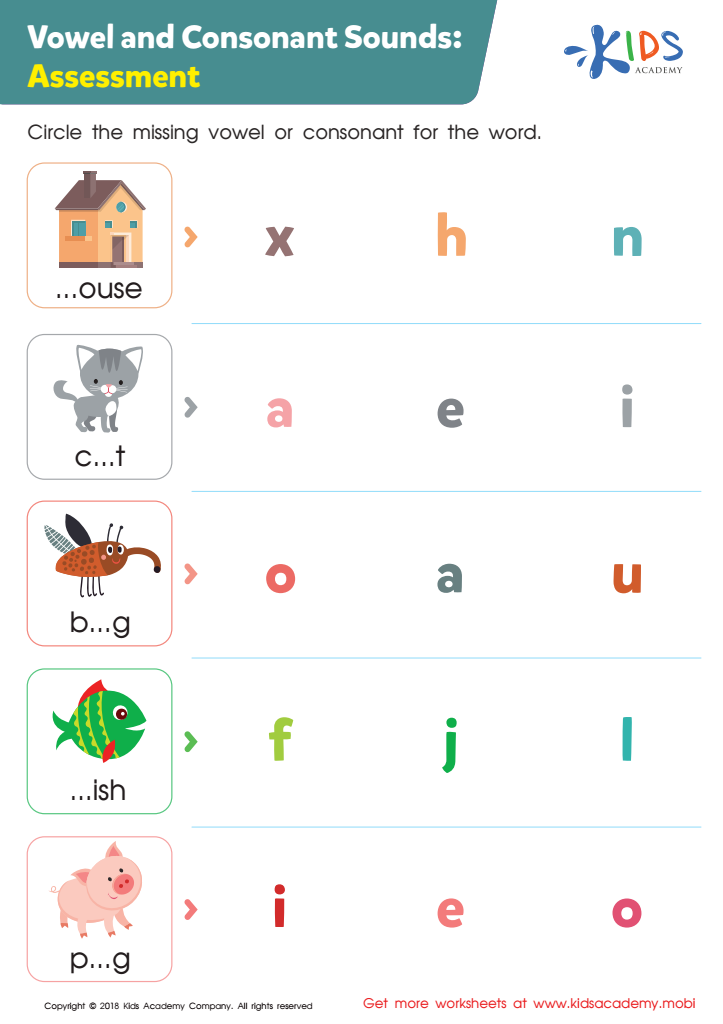

Vowel and Consonant Sounds: Assessment Worksheet
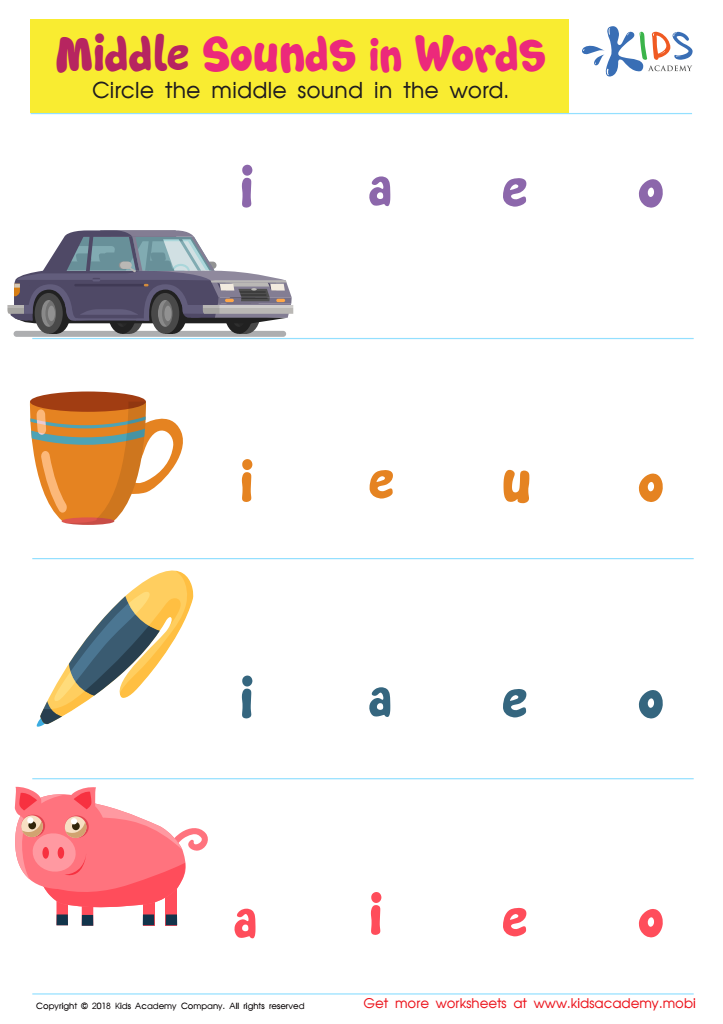

Middle Sounds in Words Worksheet
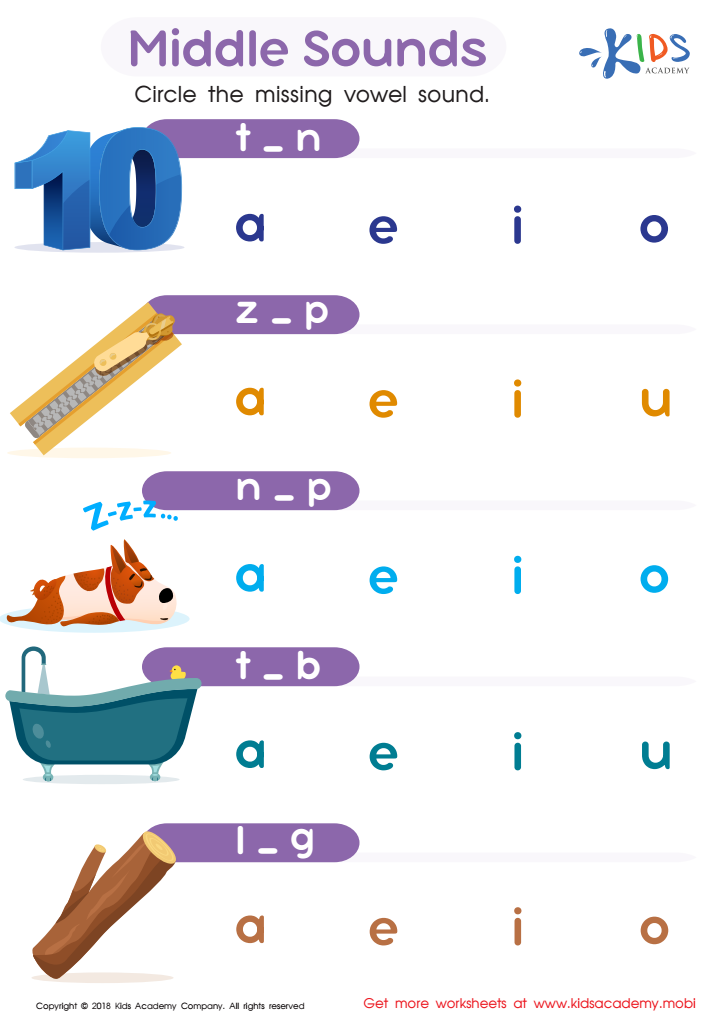

Middle Sounds Worksheet
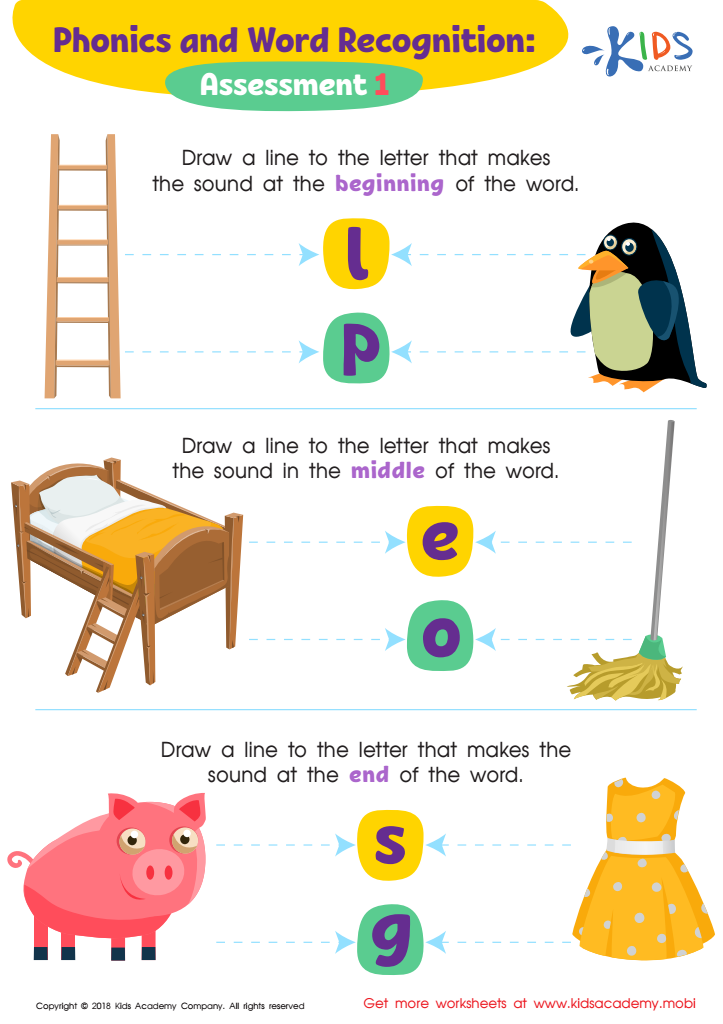

Phonics and Word Recognition: Assessment 1 ELA Worksheet
Understanding and caring about Normal Middle Vowel development for children ages 3-8 is crucial for both parents and teachers because it directly impacts a child's ability to read, write, and communicate effectively. Middle vowels, often the vowels in the medial position of words (such as the 'a' in "cat," 'e' in "red," 'i' in "six," and 'o' in "not"), are foundational sounds in the English language. Mastery of these vowels can make the difference between clear, accurate reading and common reading difficulties.
For young children, accurately identifying and pronouncing middle vowels is essential to phonemic awareness, which is a strong predictor of reading success. When children grasp the concept of middle vowels, they can more easily decode new words and expand their vocabulary. This skill is a cornerstone for literacy, which in turn influences academic performance across all subjects.
Teachers use this knowledge to assess a child's reading development and tailor instruction to specific needs, fostering a supportive learning environment. For parents, engaging their children in activities that reinforce these sounds—like reading together or playing phonics games—can provide additional practice and improve confidence.
By prioritizing middle vowel proficiency, parents and teachers help build a solid linguistic foundation, setting children on a path to becoming adept readers and confident communicators.

 Assign to My Students
Assign to My Students










